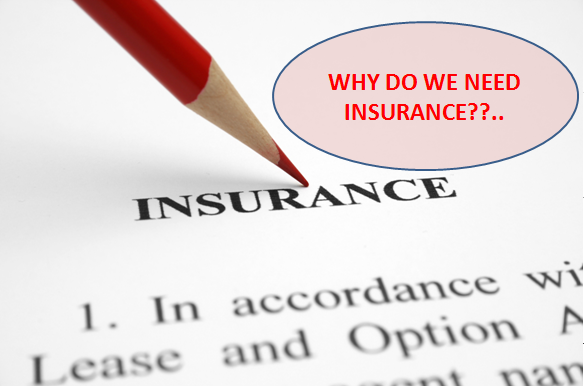The 9-Minute Rule for Pacific Prime
The 9-Minute Rule for Pacific Prime
Blog Article
More About Pacific Prime
Table of ContentsThe Greatest Guide To Pacific PrimeGetting My Pacific Prime To Work4 Simple Techniques For Pacific PrimeAbout Pacific Prime
In most states, the insurance company is required to send you a duplicate of the modifications to your plan. It is vital that you read Endorsements or Bikers so you comprehend exactly how your plan has changed and if the plan is still ample to fulfill your requirements. To acquire a copy of your insurance coverage plan, please call your insurance coverage agent or firm.
The Institute of Medication (IOM) Board on the Repercussions of Uninsurance launches an extended evaluation of proof that addresses the value of health and wellness insurance coverage with the magazine of this report. Coverage Matters is the initial in a collection of six records that will certainly be provided over the next 2 years documenting the reality and effects of having actually an estimated 40 million people in the USA without medical insurance protection.

Get This Report on Pacific Prime
The goal of this series of research studies is to redouble plan attention on a longstanding trouble. Adhering to the longest economic growth in American background, in 1999, an approximated one out of every 6 Americans32 million adults under the age of 65 and greater than 10 million childrenremains without insurance (Mills, 2000).

Ten percent of the populace accounts for 70 percent of wellness treatment expenses, a connection that has remained consistent over the past 3 decades (Berk and Monheit, 2001) - group insurance plans. Thus medical insurance remains to serve the function of spreading risk even as it progressively funds routine care. From the perspective of healthcare suppliers, insurance policy lugged by their people aids safeguard a revenue stream, and communities gain from financially viable and stable health care specialists and institutions
Government provides health insurance policy to populaces whom the exclusive market might not offer properly, such as impaired and seniors, and populaces whose accessibility to healthcare is socially valued, such as kids and expecting women. The ultimate ends of medical insurance protection for the private and neighborhoods, including office areas of workers and employers, are improved health end results and quality of life.
The 10-Second Trick For Pacific Prime
Employees place health and wellness insurance initially by far in relevance among all the advantages used in the work environment (Salisbury, 2001). Although there have actually been substantial investments of personal and public funds to provide wellness insurance coverage, several people still have no protection. In spite of extensive reporting of study searchings for and healthcare study results, the public remains baffled and misinformed about Americans without wellness insurance and the implications of lacking protection.
:max_bytes(150000):strip_icc()/terms_i_insurance_FINAL_-3556393b3bbf483e9bc8ad9b707641e4.jpg)
Without concern, the intricacy of American health treatment funding mechanisms and the riches you could try these out of resources of information include in the public's confusion and hesitation about health insurance coverage statistics and their interpretation. This report and those that will comply with purpose to boil down and present in readily reasonable terms the considerable study that bears on questions of medical insurance coverage and its importance.
Fifty-seven percent of Americans surveyed in 1999 thought that those without wellness insurance are "able to get the care they need from doctors and healthcare facilities" (Blendon et al., 1999, p. 207). In 1993, when nationwide interest was concentrated on the issues of the uninsured and on pending health care legislation, simply 43 percent of those questioned held this idea (Blendon et al., 1999).

They likewise receive less precautionary services and are much less most likely to have regular treatment for chronic problems such as high blood pressure and diabetic issues. Chronic conditions can cause expensive and disabling complications if they are not well taken care of (Lurie et al., 1984; Lurie et al., 1986; Ayanian et al., 2000). One national study asked greater than 3,400 adults concerning 15 extremely serious or somber conditions.
Some Of Pacific Prime
Extra proof is provided later on in this phase in the discussion of insurance coverage and access to health and wellness treatment. http://go.bubbl.us/e0d727/3ee9?/New-Mind-Map. People without medical insurance are young and healthy and select to go without insurance coverage. Practically fifty percent (43 percent) of those checked in 2000 thought that people without medical insurance are more most likely to have health troubles than people with insurance policy
Voters and plan manufacturers in emphasis team discussions identify those without insurance as youths that have the chance to be covered and feel they do not require it (Porter Novelli, 2001). Compared to those with at the very least some private protection, the without insurance are less likely to report being in superb or very great wellness (Agency for Health Care Research and High Quality, 2001).
RESOURCE: Center for Expense and Funding Studies, Company for Health Care Research Study and Top quality, based upon MEPS data. Young adults between 19 and 34 are much more likely to do not have medical insurance than any other age. This is chiefly since they are less usually qualified for employment-based insurance due to the nature of their job or their short tenure in it.
The perception that people without insurance coverage have better-than-average health and wellness complies with from puzzling the fairly young age account of the uninsured with the much better health and wellness, on standard, of younger persons. This obscures the link between health and wellness standing and health insurance coverage. For those without accessibility to office medical insurance, poor health is a prospective obstacle to purchasing nongroup coverage since such insurance coverage may be highly valued, leave out preexisting conditions, or be simply inaccessible.
Report this page